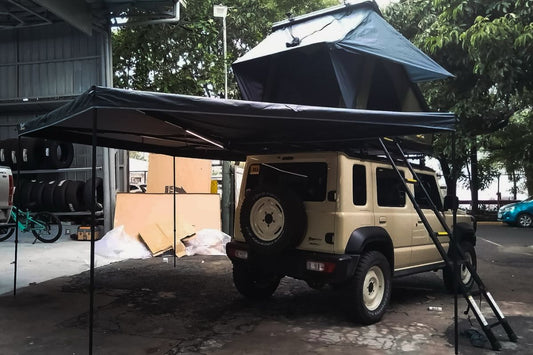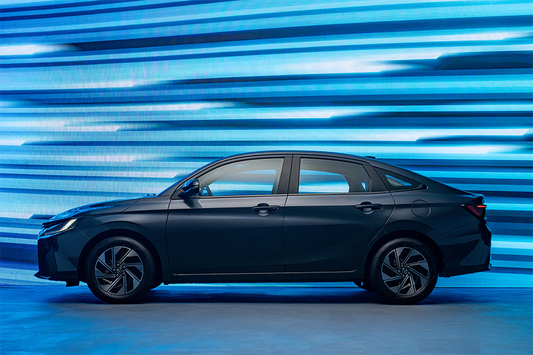What are some first aid tips for campers?
- Always pack a first aid kit
- Look up the weather beforehand
- Manage blisters well
- Be prepared for bites and stings
- Deal with cuts and abrasions
Camping gives you the opportunity to spend time outdoors and enjoy the fresh air, the sights, and some outdoor activities. But before setting out for your camping trip, it’s important to be prepared for all kinds of situations. Just like with any outdoor activity, there is a potential for accidents and injuries. You won’t always have other people who can help you, so it’s beneficial to learn about first aid. Pack your first aid kit and follow these first aid tips for campers.
Always Pack a First Aid Kit

The first and most important thing is to pack a first aid kit. While the outdoors can be fun, there is a possibility of cuts, scrapes, and the like. Having a first aid kit with you would allow you to respond immediately to an emergency.
When packing a first aid kit, consider your destination and the number of people in your group. Here are some examples of things you should bring with you:
- Cotton pads and swabs
- Sterile dressings and waterproof bandages
- Gauze bandage and safety pins
- Antibiotic spray and ointment
- Antihistamine and bug bite treatments
- Antacid and anti-diarrheal medicines
- Tweezers and a tick-removal tool
- Latex-free gloves and hand sanitizer
- Eye drops
- Sunburn cream
- Pain relievers and other medicines
- Thermometer
- Whistle
- Emergency blanket
- Flashlight
Keep in mind that your list will depend on the individual needs of each camper. Pack current prescriptions and sunscreens as well. Pack care items for pets too. There are ready-made first-aid kits too, which include several useful items. If you’re overlanding, check out the 100+ Piece Survival ‘Vehicle’ First-Aid Kit, which is designed by first aid experts in Australia.
Look Up the Weather Beforehand
Before heading out to the campsite, do your homework and research the weather conditions. Some issues, such as heat stroke, sunburn, and dehydration, can happen without preparing well for the weather conditions.
Always bring plenty of water with you. You can use a vacuum-insulated water bottle to keep your drinks hot or cold for longer. Aside from that, apply sunscreen frequently to protect your skin. You can also wear clothing and use awnings rated with sun protection.
Heat exhaustion can happen when you lose too much water or salt due to sweating or dehydration. Symptoms include heavy sweating, faintness, dizziness, fatigue, extreme thirst, nausea, and low blood pressure upon standing. If this happens, do the following:
- Move the affected person out of heat
- Remove tight clothing
- Lay the person down and elevate the legs and feet
- Provide chilled water
- Cool them down
Manage Blisters Well
Make sure to break in your shoes before taking them on a long hiking trail, so you can prevent blisters. But if you or another person experience them while camping, here are some things you can do:
- Wash the blister with mild soap
- Put on antibacterial cream
- Cover the blister with a bandage
- Change the bandage once a day
Be Prepared for Bites and Stings

Depending on the place you’re going to, you might also encounter bites and stings from insects or snakes. You can protect yourself from mosquitoes by carrying insect repellents. An anti-itch cream would also be helpful. Other than that, having tweezers is beneficial for dealing with bees, wasps, and ticks.
For snake bites, you can prevent this from happening by walking away when you see a snake. But if you get bitten, check for fang marks to know whether the snake is venomous or not. Venomous snakes leave two clear puncture marks, while nonvenomous ones will usually leave two rows of teeth marks.
Call for medical attention when you encounter a snake bite. While waiting, you can do the following:
- Allow the bite to bleed for 15 to 30 seconds
- Wash the area with soap and water
- Remove tight clothing and jewelry because the bitten area may swell
- Keep the bitten area below the heart to reduce flow of venom
- Monitor the person’s vital signs
Deal with Cuts and Abrasions
It’s normal to get minor cuts and abrasions while outdoors, and dealing with it is not that different when you’re treating a cut at home. Below are some things you can do:
- Stop the bleeding
- Clean the wound
- Apply antiseptic cream
- Bandage the wound
Key Takeaway
By knowing about first aid tips for campers, you will be better prepared when something happens when you’re out and about. Having a first aid kit with you will be beneficial when you or another person experiences insect stings, snake bites, cuts, and the like. The 100+ Piece Survival ‘Vehicle’ First-Aid Kit has over 100 components, so you can respond immediately to emergencies. Other than that, try your best to take steps to prevent these from happening.
If you’re looking for other camping gear, you can check out our products here at Overland Kings! We have everything you need so you can have a convenient, safe, and fun experience camping or overlanding. Send us a message if you have inquiries.
Other Blogs

Isuzu Philippines brings motoring media to Japan for exclusive test drive of the All-New Isuzu D-MAX EV
October 27, 2025 Read More
How to Clean and Store Camping and Hiking Gear
October 16, 2025Discover how to clean and store camping and hiking gear properly for longer-lasting, ready-to-use equipment.
Read More
FOR THE ELEVATIVE YOU: Toyota Motor Philippines introduces the All-New Toyota ATIV
October 13, 2025New subcompact sedan line includes TMP’s most affordable electrified model to date
Read More